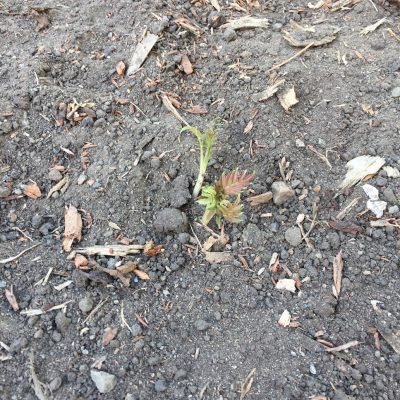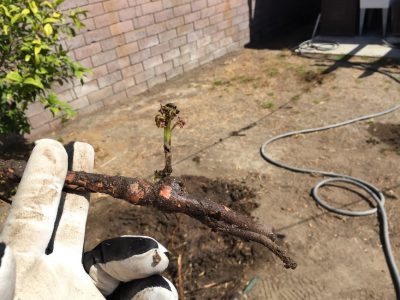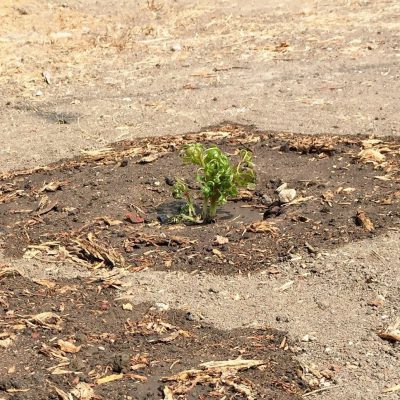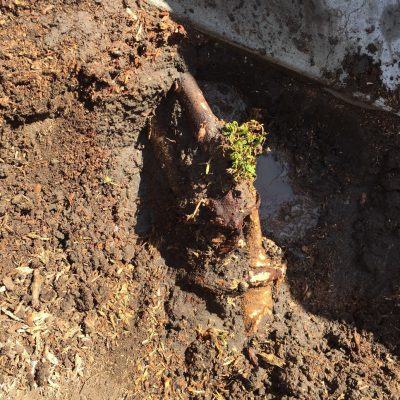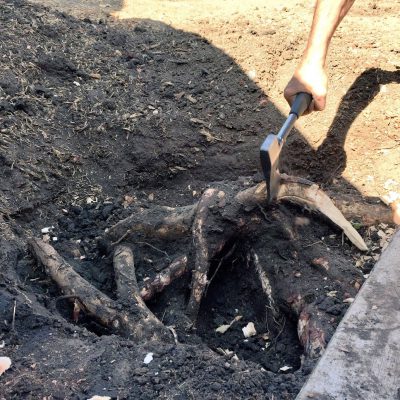In my back yard, there used to be a giant tree.
It was a Brazilian pepper tree, about thirty feet tall, with a trunk you couldn’t fit your arms around and a canopy that shaded the entire yard.
Branches had even grown around and encased the telephone wire that ran past the house.
Its roots were giant. They could be seen snaking throughout the entire yard, crowning and diving like loops of the Loch Ness Monster in a field that the tree’s immense shade had rendered brown and barren.
Their growth was even starting to crack and buckle the concrete foundation of the garage from underneath.
The tree had stood there for a decade or more, tolerated by the house’s previous residents.
When we moved in, the tree was the first thing to go. Three guys with chainsaws spent three days chopping it up, grinding its stump, and pulling out a few other baby pepper trees (“only” 6 feet tall) growing elsewhere on the property.
We were warned by the arborist that it was an invasive species, and that we would likely see the remaining roots still in the ground try to regenerate little shoots (“suckers”).
His words proved prophetic. A week after the tree was cut down, I found one little red-leafed bundle of nothing, poking its head through the dust in the middle of the yard…
I sprayed it with herbicide and watched its little fronds shrivel.
The following week, there were two new suckers. I sprayed them as well.
Two weeks later, seven more had popped up, and they too got the spray.
Pretty soon I had to stop keeping count.
When the herbicide ran out, I decided to dig some of the roots instead, to pull out the things actually sending the suckers to the surface.
I knew there were a million root structures buried in the earth, and I’d never be able to get them all. But just grabbing the ones that came up easily would be a start.
Here’s one little sucker and the root he rode in on. Pretty big root for just a little guy.
That root connected to another, which connected to another, which forked off to another, which crossed paths with another, until finally, just in the extraction of that one little jerk, I’d pulled up the ground six feet on either side of the original spot where the sucker had arisen.
Some of the roots were as thick as baseball bats.
The suckers look so innocuous on the surface, lush and excited to be here, ready to join the big wide biosphere.
Below, you can see one that looks pretty small on the surface, but that quickly revealed itself to be part of a gigantic root structure — in fact, the very root that had snaked underneath the garage and cracked the concrete pad!
After hours of excavating around this giant root blob — all revealed thanks to the tiny clutch of sky-seeking stems pictured above — the best we could do was chop up what we could see, apply herbicide to the cut ends, and fill in the hole again.
There is a metaphor here, I’m sure.
Maybe it’s something about not being able to judge people from what they reveal on the surface — sometimes they are connected to other things, other people and parts of life, in ways you can’t perceive. You never know who knows whom, that sort of thing.
It also brings to mind my conversation with the makers of counterinsurgency-themed board games. These war games attempt to simulate combat between the traditional military and insurgent or guerrilla forces, which can strike from hidden positions and then melt back into society. Terrorist cells are surely connected in ways that these roots are dramatizing.
Perhaps the roots can teach a lesson about patience — by which I mean, although there are more suckers every day, the more I tear out huge swaths of roots, surely the fewer roots remain in the ground. Isolated root segments might be sending up gasping shoots en masse because, various chunks having been removed by me, they can no longer draw nutrients from the entire network. A huge show of suckers, then, may be a death bloom.
All I know is that I walked through the yard yesterday and counted TWENTY-FIVE tiny new sprouts.
Please. Send help.

